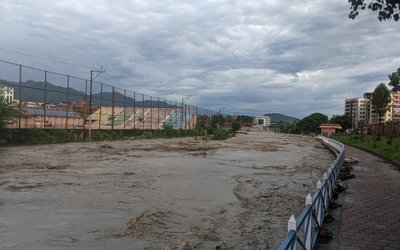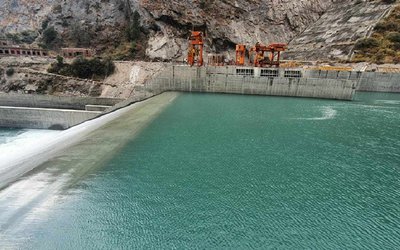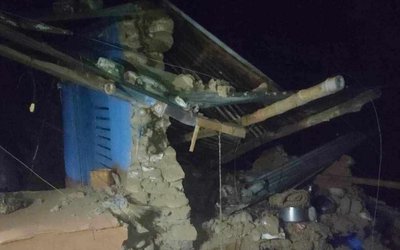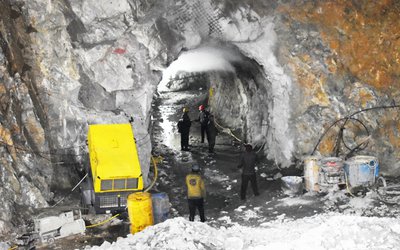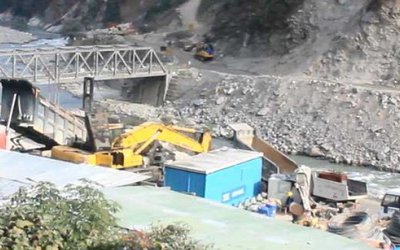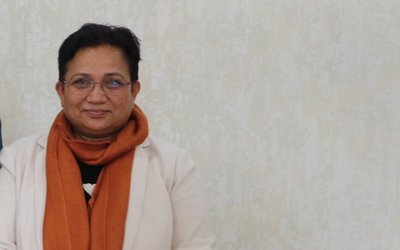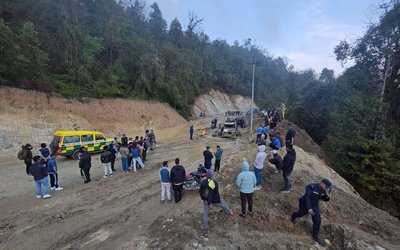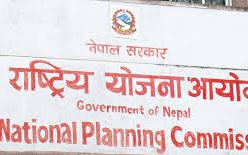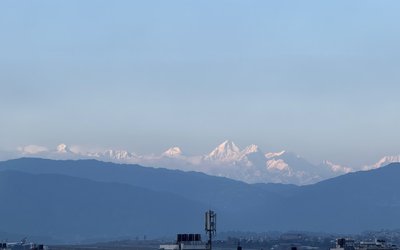
Nepal-India energy secretary-level talks, also called the Joint Steering Committee (JSC) meeting, concluded in New Delhi with an agreement to finalize the construction modality of a new 400 kV Butwal-Gorakhpur cross-border transmission line within three months.
The meeting was led by Anup Kumar Upadhyay, secretary at the Ministry of Energy, Water Resources and Irrigation (MoEWRI) and his Indian counterpart Ajay Kumar Bhalla from the Ministry of Power.
According to Dinesh Kumar Ghimire, spokesperson for MoEWRI, the meeting has agreed to authorize the preparation of the construction modality of the cross-border transmission line to Nepal Electricity Authority (NEA) and Central Electricity Authority of India (CEA).
A Nepal-India joint technical group will prepare the building modality of this project. During the JSC meeting, Nepal proposed that both countries take the initiative to individually construct the transmission lines that fall in their respective territories and the meeting also urged the technical committee to recommend the funding modality to the JSC, Ghimire added.
According to Ghimire, India has shown keen interest in constructing the Butwal-Gorakhpur transmission line and assured to pay the total construction cost. He further added that since Nepal will have surplus energy after three years, India has agreed to buy electricity from Nepal after that period.
Meanwhile, the JSC meeting has also principally agreed to establish energy banking system. Nepal had put forward a proposal for the system and the Indian authorities have agreed to this vision, Ghimire informed. “CEA will hold discussions with the Uttar Pradesh and Bihar governments on how this concept can be taken forward.
According to The Himalayan Times, Ghimire added, the meeting also agreed to set up another 50 kV transformer at Tanakpur substation and import additional 40 megawatts of power from India. At present, Nepal has been importing 30 megawatts of power through the Tanakpur substation. “India has also agreed to bear the cost of land acquisition and investment to set up the new transformer.”
Also, there was an agreement to convert the single-circuit Kataiya-Kusaha and Raxaul-Parwanipur transmission lines to double-circuit under the grant aid of the Indian government. Nepal also proposed to import additional 50 megawatts of electricity through each of the above mentioned transmission lines during the JSC meeting. The Indian side has taken the proposal positively and they have assured to do the needful, as per Ghimire.
The Himalaya Times reports that the JSC meeting has also agreed to conduct a study on two other cross-border transmission lines — Duhabi-Purnia and Lamki-Bareilly — that are included in the energy master plan agreed between the two countries. It will be studied by the joint technical team within three months.
During the meeting, JSC officials also agreed to study and upgrade existing 132 kVA and 33 kVA transmission lines in Dhangadhi, Nepalgunj and Bhairahawa.
The next meeting of the Joint Steering Committee is scheduled for either September or October.

Secretary Anup Kumar Upadhyaya before meeting (Courtesy: Anup Kumar Upadhyay's face book)

(Courtesy: Anup Kumar Upadhyaya's face book)

- Nepal Electricity Authority cancels contract worth over Rs 1 billion, now electricity wires going to customers' homes are bare
- Apr 21, 2025
- Four people died in Taplejung after their vehicle caught fire after getting entangled in a live wire
- Apr 21, 2025
- RPP General Secretary Rana released on bail
- Apr 21, 2025
- Nepal requires Rs 21.165 trillion to implement SDGs goals
- Apr 21, 2025
- Putin's unilateral 'Easter ceasefire' ends, Ukraine suggests partial truce
- Apr 21, 2025
